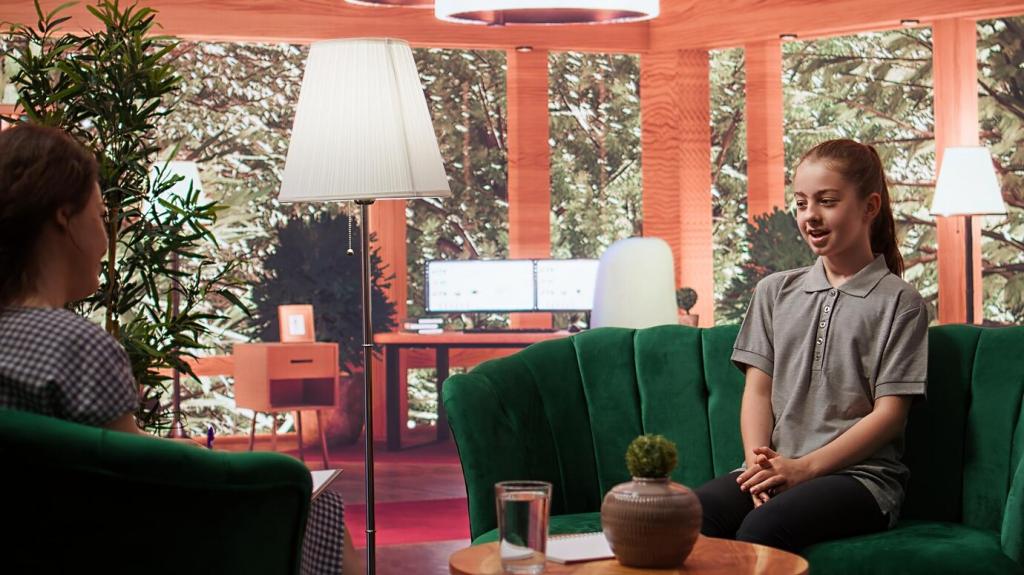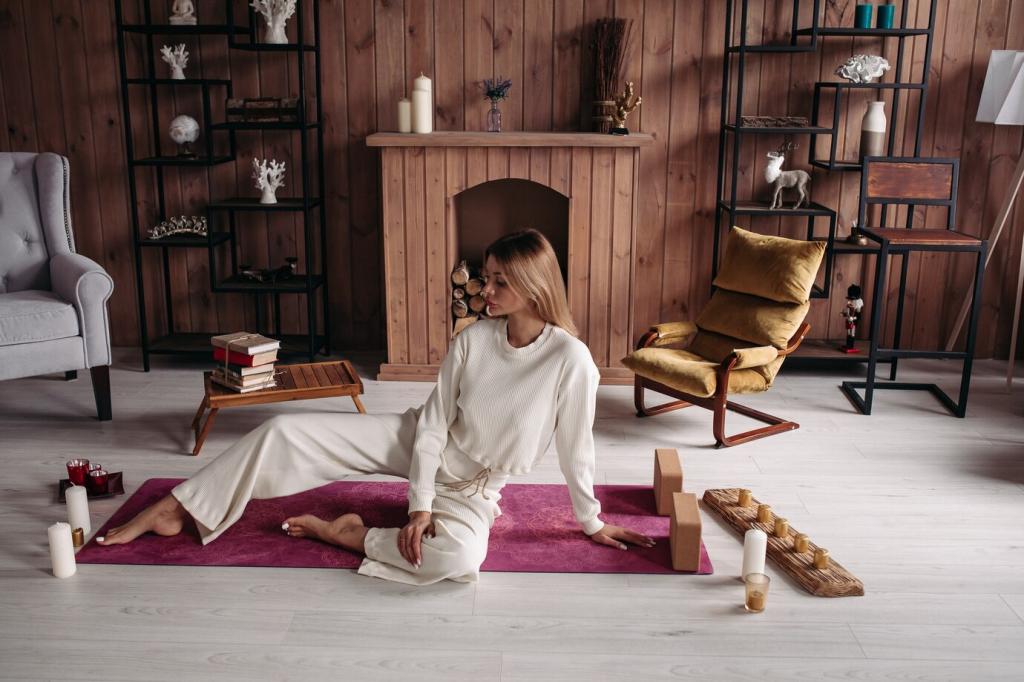Layout, Flow, and Micro-Zones
Walk your main routes carrying groceries, laundry, or a toddler’s hand. Remove obstacles, coil cords, and widen pathways to shoulder width. Align furniture legs with walls to reduce visual stutter. Post a before-and-after floor sketch to inspire others.
Layout, Flow, and Micro-Zones
Carve tiny destinations into larger rooms: a stretch square beside the bed, a reading ledge near a window, a tea tray by the couch. Define with a rug or tray, not walls. Which micro-zone would change your day most?





